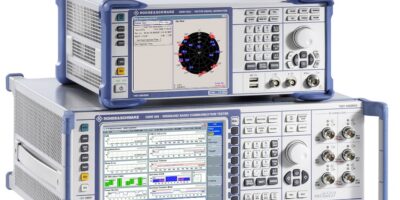Artificial intelligence (AI) -powered autonomous machines can be realised with the AIE900-902-FL fanless edge AI system, says Axiomtek.
According to Axiomtek, the AIE900-902-FL is an edge AI computing system for advanced AI-powered autonomous machine applications. It is based on Nvidia’s Jetson AGX Xavier platform which has an eight-core Nvidia Carmel Aem v8.2 (64-bit) processor and 512-core Nvidia Volta graphics processing unit (GPU) with 64 Tensor cores. The AI system has four PoE ports and two LAN ports for 3D lidar and high-speed intelligent video surveillance applications. The AIE900-902-FL is designed for use in 3D vision guided robots, autonomous mobile robots (AMRs), intelligent video analytics, domain-focused robot assistants, intelligent roadside units.
The AIE900-902-FL has a ruggediszed design for harsh environments, allowing it to operate under a wide temperature range from -30 to +50 degrees C and vibration of up to 3G rms. It is housed in a compact enclosure. Despite its size, the AIE900-902-FL comes with a 32Gbyte 256-bit LPDDR 4x onboard and has one M.2 Key M 2280 SSD slot with a PCIe x4 NVMe interface, one Micro SD slot and one 2.5 inch SSD/HDD drive bay for massive data processing and AI applications.
The embedded system has one full-size PCI Express Mini Card slot (USB + PCI Express signal), one M.2 Key E 2230 slot and one SIM slot for 3G/4G, GPS, Wi-Fi and Bluetooth connections. To reduce the effort and shorten the deployment process, the Nvidia JetPack is pre-installed on the edge AI system for quick development. The AIE900-902-FL is certified to CE and FCC Class A.
The AIE900-902-FL offers multiple I/O options including two lockable HDMI 2.0 ports with 4k2k supported, two 10/100/1000 Mbits per second Ethernet (Intel i210-IT), four 10/100/1000 Mbits per second PoE (Intel i210-IT), two USB 3.1 Gen2 ports, two USB 3.1 Gen1 ports, two USB 2.0 ports, one Micro USB port, one 8-CH DIO, two RS-232 default (or two CAN by jumper settings) and four SMA-type antenna openings. There are eight LED indicators showing for power / storage / LAN / PoE active status alert. There is also a recovery switch and one 24V DC power input connector.
The AIE900-902-FL will be available for purchase in September 2021.







